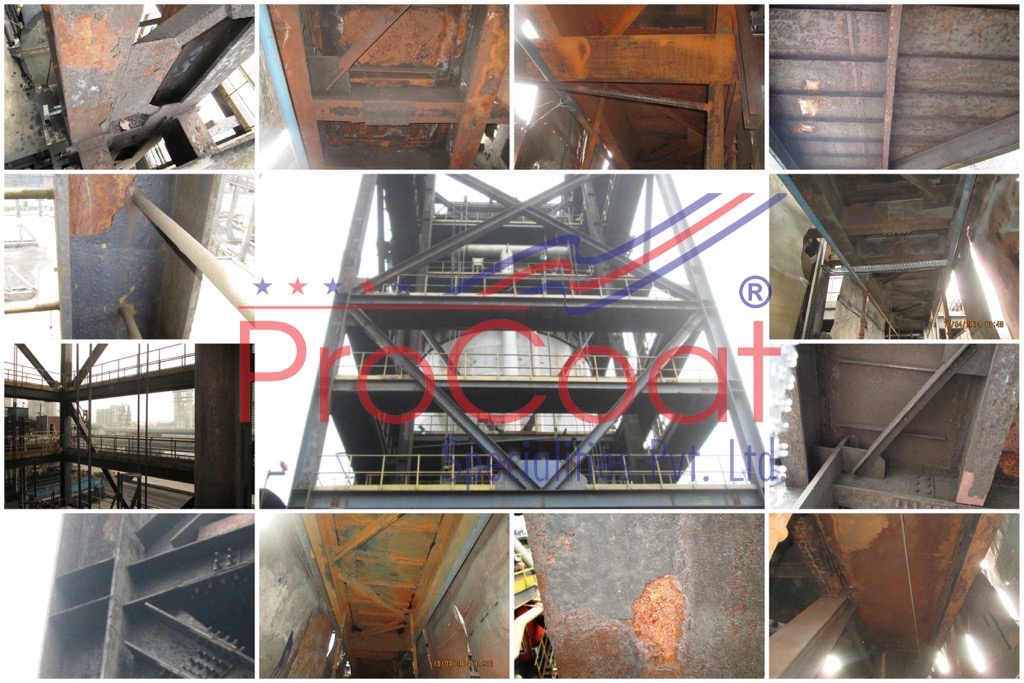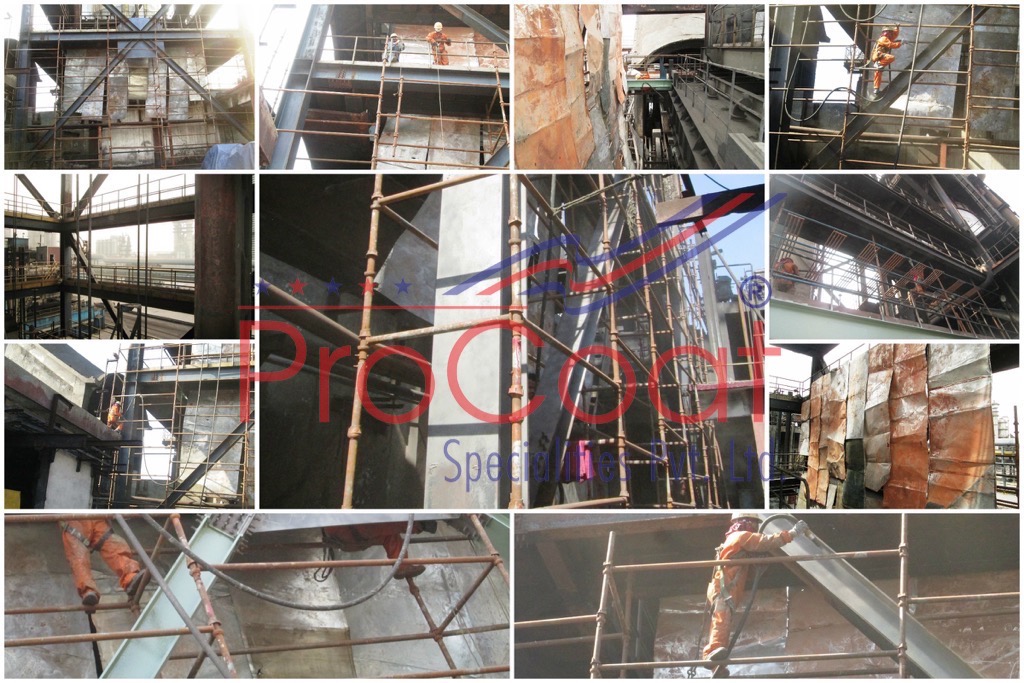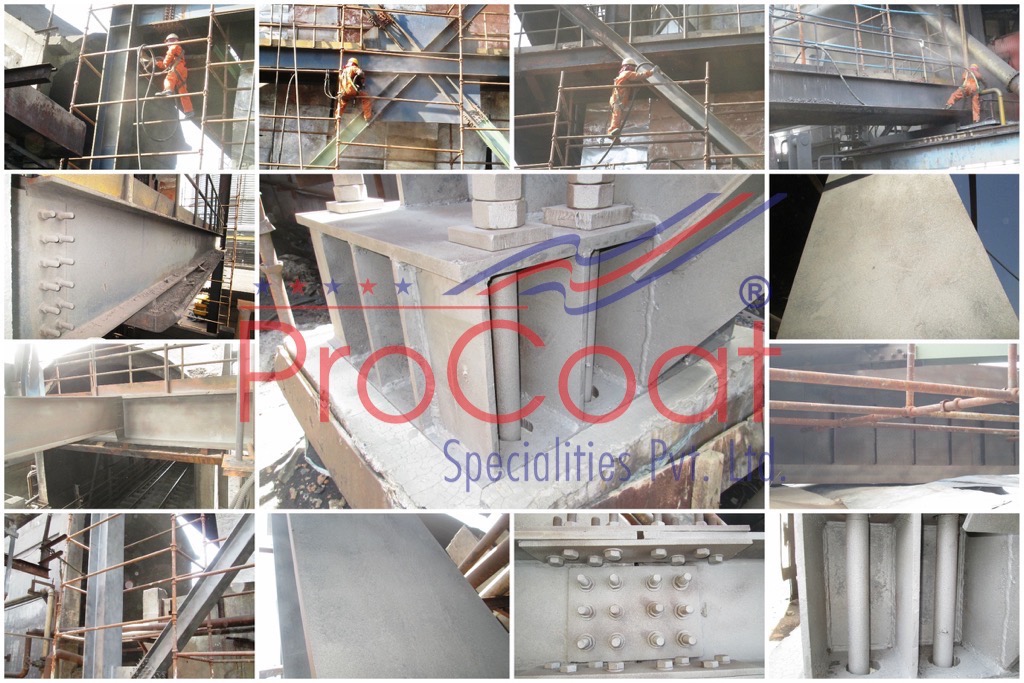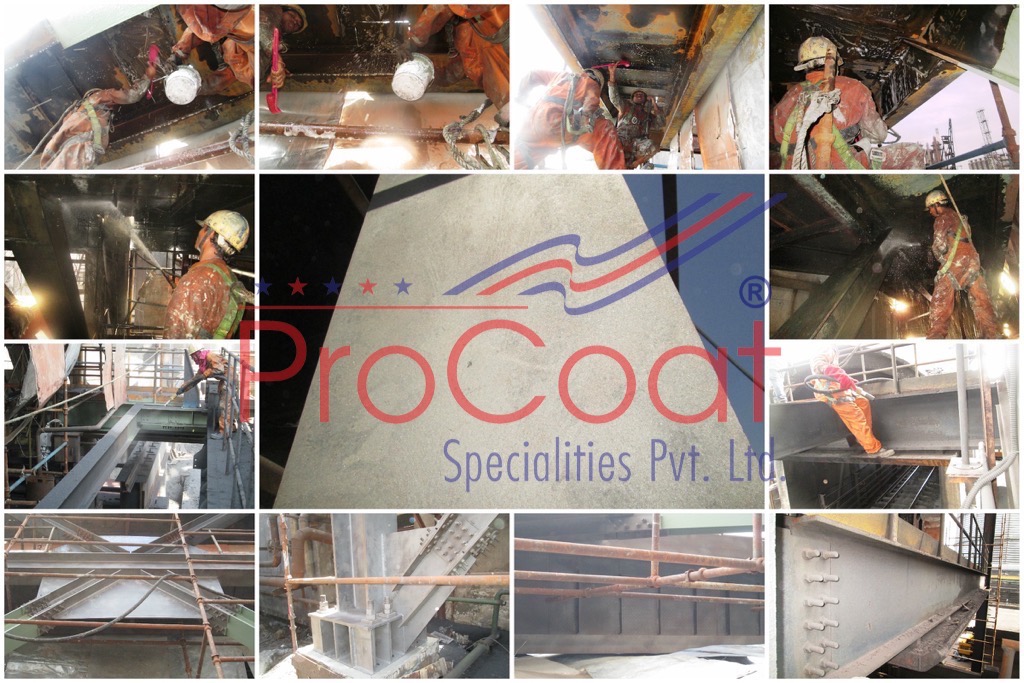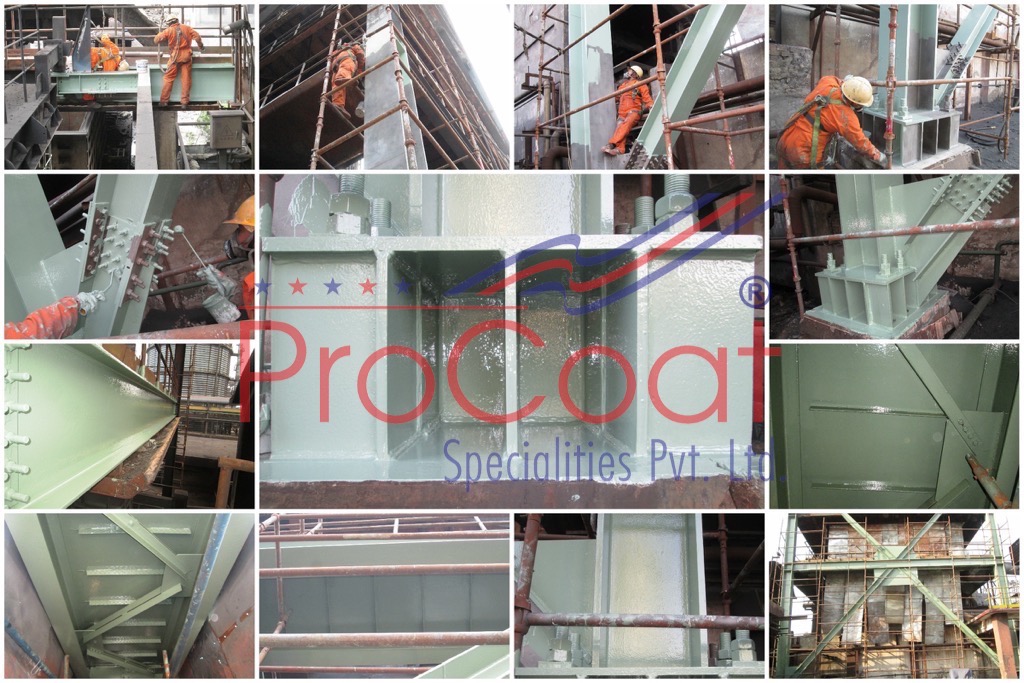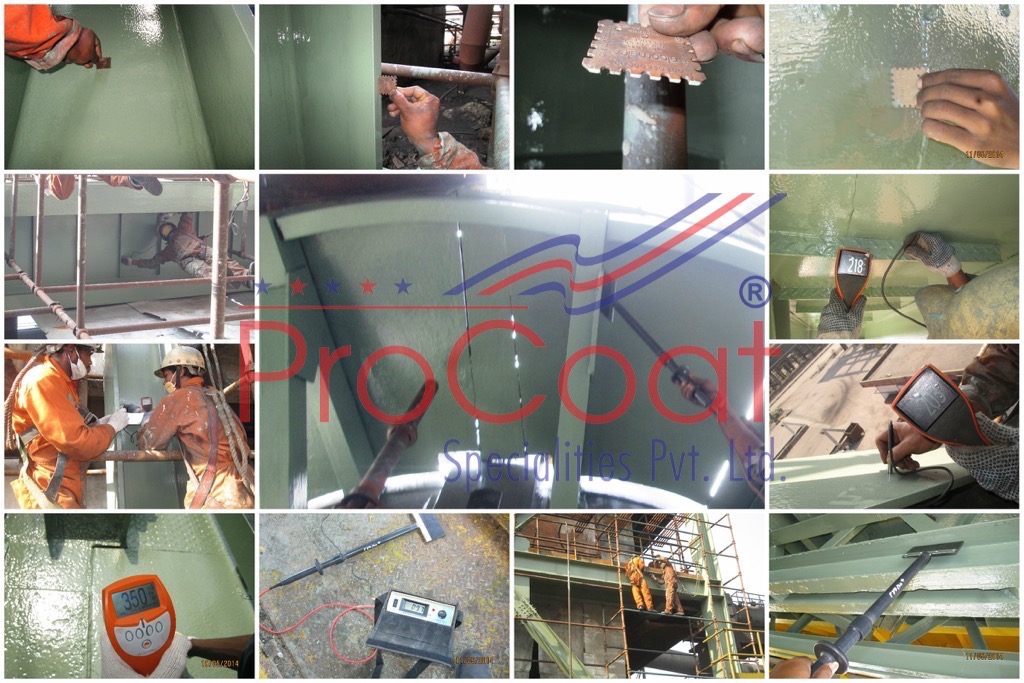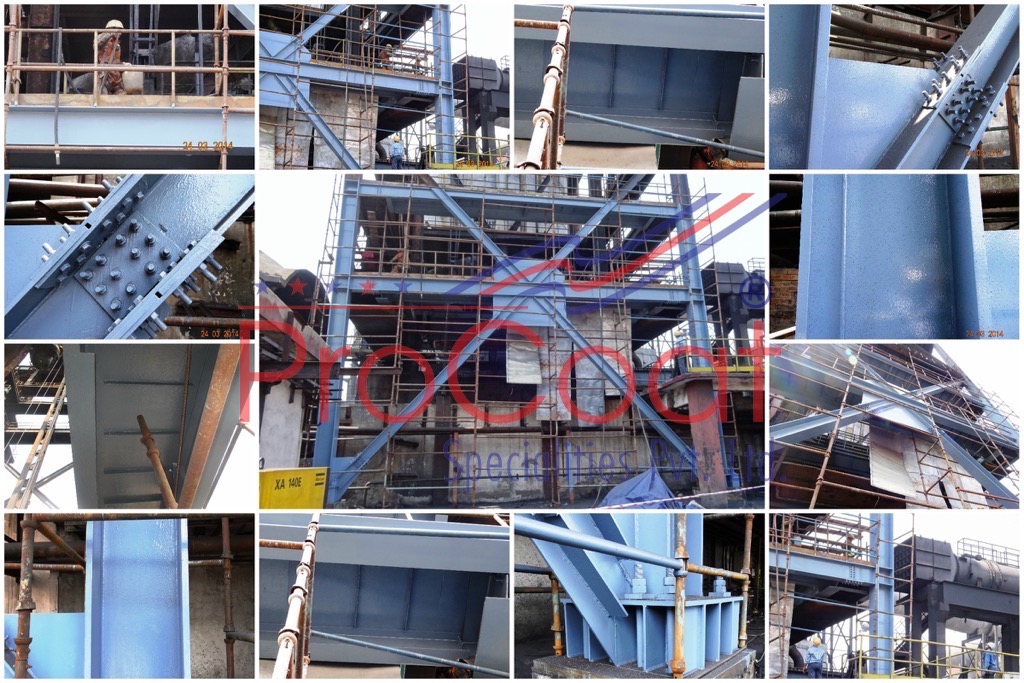Coke at around 1050 °C is transported to the top side of this plant to cool it down using gases unlike the previous traditional water quenching process. Nevertheless, though this system is very effective and serves the purpose of an economizer in an industry yet the process has subtle affect on the mild steel structures of this Coke Dry Quenching (CDQ Plant) which are experiencing aggressive corrosion due to the working atmospheric conditions prevailing in this area. Being a hot working zone along side various gaseous exposure conditions has a an immense effect on the metallic structures which is leading to high corrosion.
In order to access all the structures of this CDQ Plant which stands tall to a height of 40 meters above ground level, a tailor made scaffolding system was erected abiding all the safety norms. In order to reduce the effect of heat transmission to some extent from the bucket carrying hot coke to it’s surrounding zone, a sheet metal wall was placed to cover the bucket, which also prevented the direct flame to the working men & also prevent the abrasive blast cleaning particles from getting deposited in the coke carrying bucket.
Keeping in view the safety factors, the structures have been blast cleaned using copper slag abrasive medium to remove the corrosion deposits from the surface.
After the first round of blast cleaning process, all the structures were thoroughly water washed and scrubbed to foaming using necessary cleaning agents. Once the surface got dried up, the copper slag blast cleaning process was repeated in order to prepare the surface to Sa 2.5 standards prior to coating application. Blasting was done to make sure the surface had a sheen of near white metal finish resembling the surface of the shade card.
Application of coating was carried out directly over the prepared surface using nylon rollers with an initial high hand pressure wetting coats, followed up with subsequent low hand pressure thickness deposition coats that met the desired recommended thickness levels.
During application process the coating thickness was measured using Elcometer WFT Gauge to ensure the required Wet Film Thickness. Once the coating was cured, Dry Film Thickness was measured using Elcometer DFT Gauge & Spark Testing was carried out to ensure flawlessness coating application and complete coating integrity. The structures being located at various elevations, the surface preparation and coating application process was carried out in a phased manner emphasizing on quality application methods and more importantly implementing safe working practices.
On completing the application of Corrosion & Temperature Resistant Coating system a Polyurethane weather resistant top coat was applied over and above ProCoat Coating that also served the colour coding purpose.

